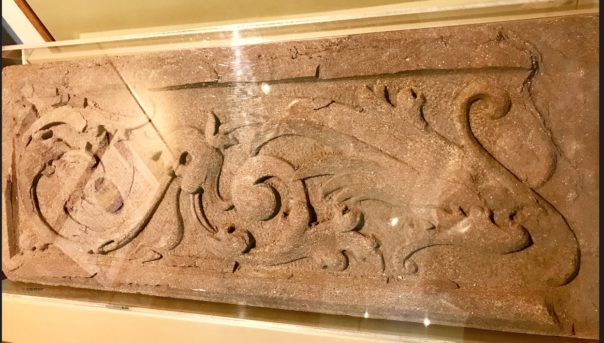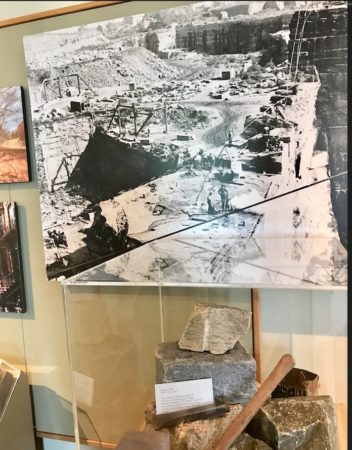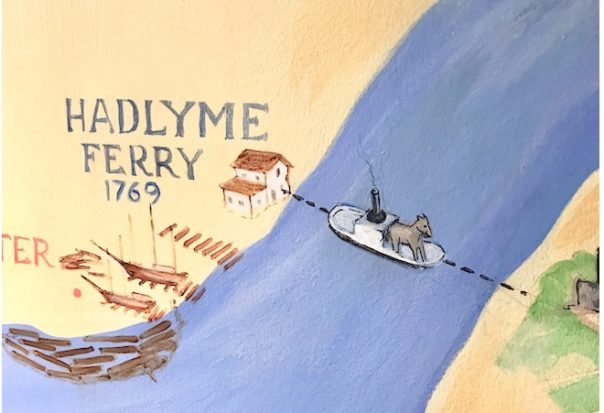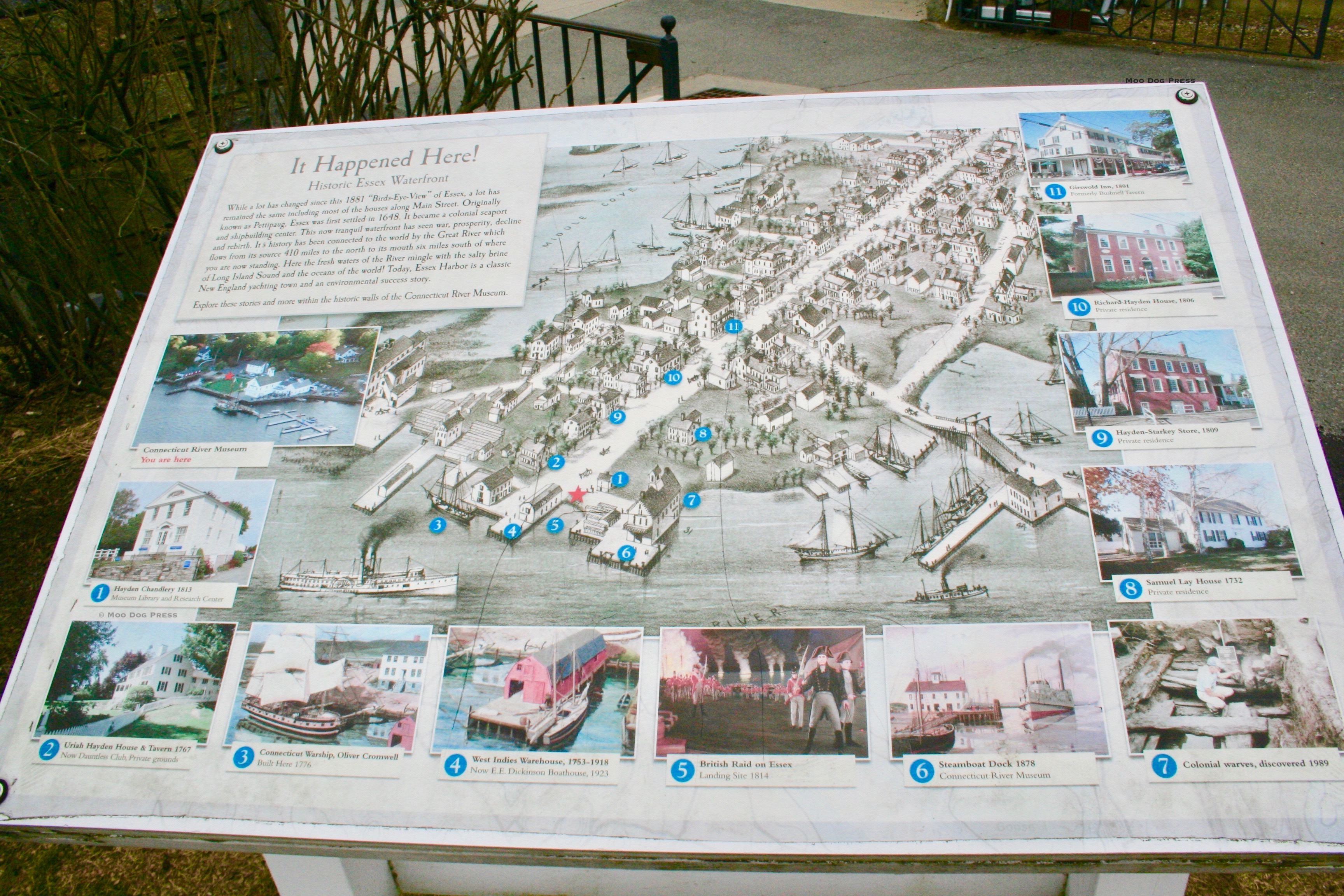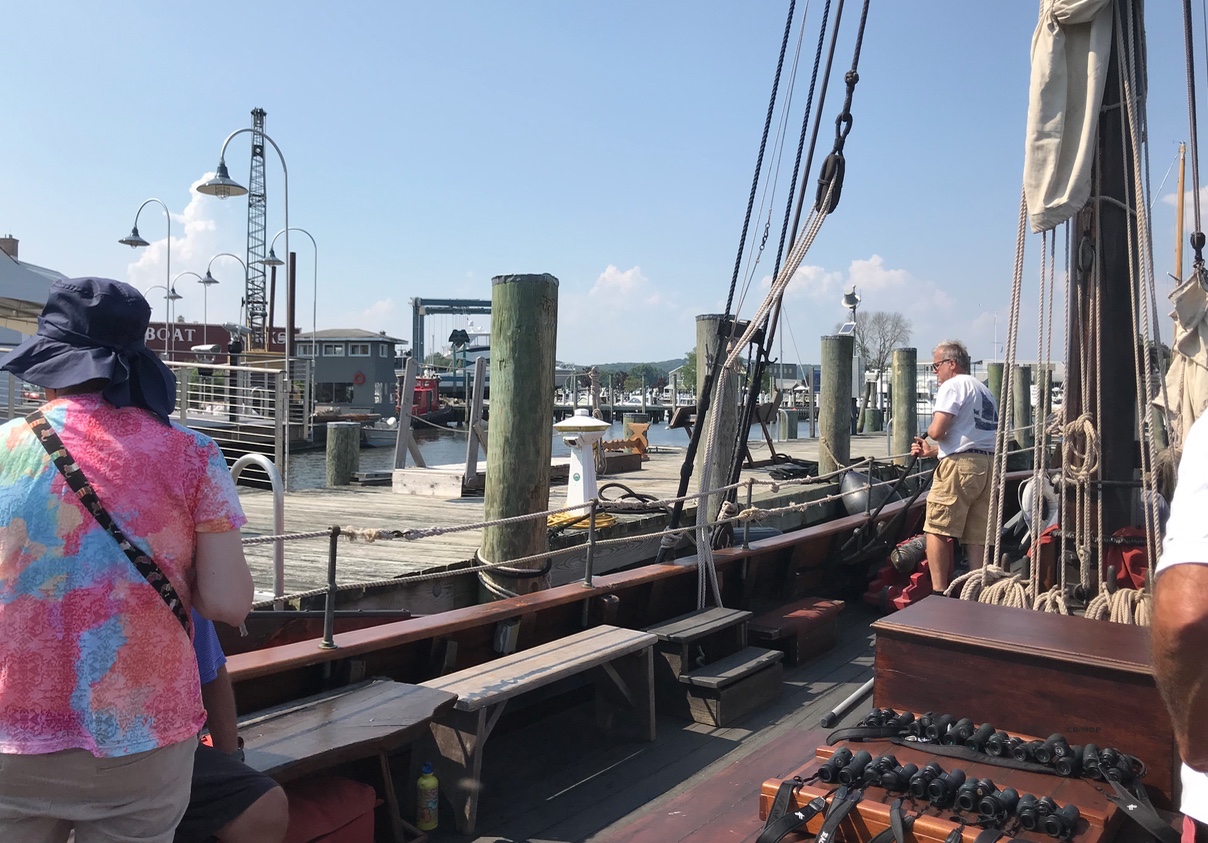COVID-19 Journal: Time is Tidal At Connecticut River Museum
“Like a giant heart beating every so slowly, the Atlantic Ocean expands and contracts twice a day, its tides gliding up and down shorelines and the rivers that run to the sea. In Connecticut, the ocean's pulse is felt as far north as Windsor, just above Hartford and more than 40 air miles from the coast.” — Jim Blissland, Long River Winding, p. 33
Rivers and time.
Editor's note: This story originally appeared Aug. 8, 2019, before the pandemic. As summer ripens into autumn, this memorable experience is worth a re-visit. New protocols are in place because of COVID-19; here is the link to the official site for Connecticut River Museum in Essex, CT.
The Connecticut River and its tributaries, beautiful and teeming with life. Rich in stories.
An interconnected watershed, sky and land. History, objects that help illuminate those stories. Ships. Quarries. Brownstone. Immigrants. Culture, transports. Docks, ferries, boilers.
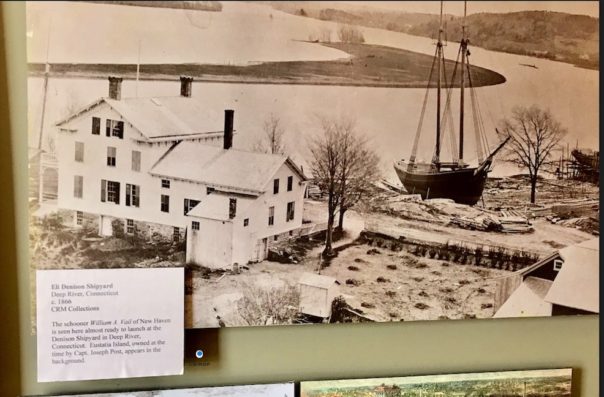
Eli Denison Shipyard, one image at CRM. “Deep River, Connecticut c. 1866. The schooner William A. Vail of New Haven is seen here almost ready to launch at the Denison Shipyard… Eustatia Island, owned at the time by Capt. Joseph Post, appears in the background.”
After an expedition onboard the Onrust, a walk through the Connecticut River Museum, dazzled by the array of ideas, innovations, accomplishments.
The working model of a “walking beam” (press a button and watch the action that helped power a steamship.) Described thus: “Model of a ‘Walking Beam’ steam engine, designed and built by Roderick M. Scott and Robert W. Jones. Gift of Robert W. Jones. This model represents the type of engine that powered waterwheel steamboats that plied the waters of the Connecticut and Hudson Rivers during the mid-to-late 19th centuries. It was called a ‘walking beam; engine because of the rocking movement of the rods connecting the steam engine to the side wheels…”
Nearby, a “compensating binnacle.” (What is a binnacle? In life, there is always more to learn. According to A History of Binnacles by Pamela Burns-Balogh, Ph.D., “A binnacle is the housing for the compass, magnets, and soft iron objects that make it possible for a ship to accurately navigate from one port to another.” Fascinating variations are featured in images of this online book, linked here as a PDF.)
Steamboats, from Manhattan to Hartford, shuttling people and cargo.
Wave fossils from under the Connecticut River, deep time.
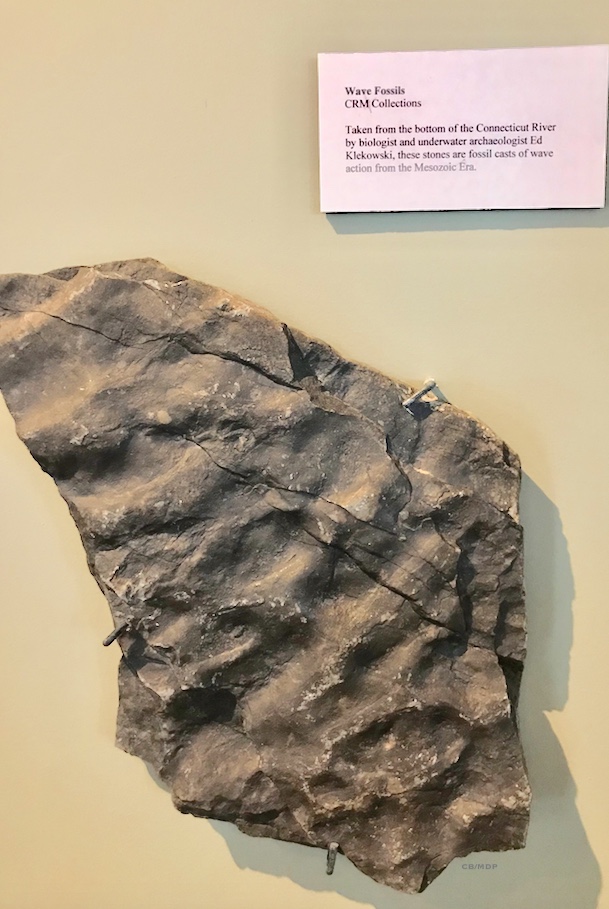
“Taken from the bottom of the Connecticut River by biologist and underwater archaeologist Ed Klekowski, these stones are fossil casts of wave action from the Mesozoic Era.” CRM collections. CB/MDP
The multi-storied mural at the Connecticut River Museum in Essex by artist Russell Buckingham that bends around corners and climbs three stories to tell the story of the river. Authors. historic sites, points of interest. There is humor there too (the Lyme portion includes a very tiny tick deftly painted in.)
Let's zoom out for a macro view. From its source near the Canadian border to Long Island Sound, the Connecticut River and its watershed include “2.4 million residents and 396 communities” and the river flows through Vermont, New Hampshire, Massachusetts, Connecticut.
In 2014, the U.S. Secretary of the Interior released a Secretarial Order that dissolved the National Blueway System (established in 2012 by Secretarial Order 3321), and “affirms the Department of the Interior's commitment to support community-based watershed partnerships. Importantly, the order maintains the designation of the Connecticut River as the nation’s first and only National Blueway. Further, it recognizes the many successes and on-the-ground accomplishments of the residents, communities, public agencies, and others who have participated in partnership efforts in the Connecticut River watershed, spanning well over half a century.”
While some humans may take proximity to rivers and the sea for granted, there are those who treasure these waterways. Native Americans place names endure, too. Once you start noticing, words and origins abound. Scrutinize any region traveled to discover layers of life, more words adapted and adopted that pre-date European settlers across the continent. Said to be named “long tidal river” (Quinnehtukqut or quonehtacut) by Algonquins, the Connecticut River watershed is home to 2.4 million humans and countless other life forms.
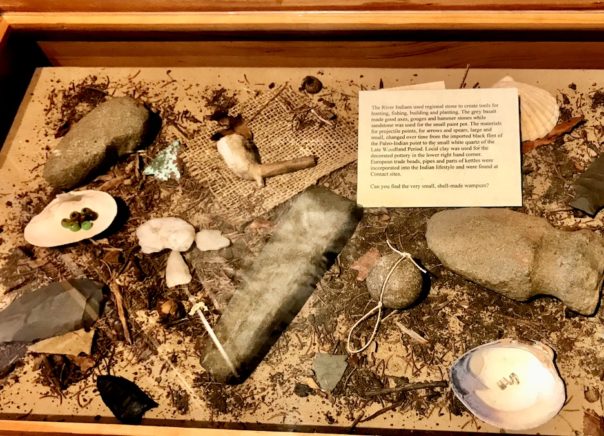
Stone tools, fishing implements, paint pots, wampum, on display In proximity to Adriaen Block exhibit at CRM.
Tributaries include the Coginchaug and Mattabassett (more indigenous place names).
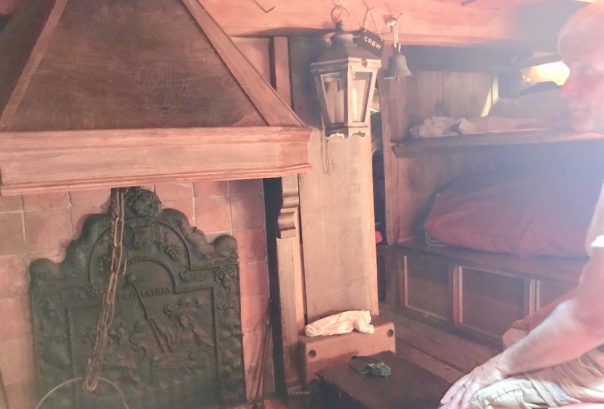
One more detail from the sail of the Onrust. A fireplace below deck, re-created here, but this is where the captain and crew slept, ate, kept warm in cold weather and weathered storms. Oh, and also transported beaver pelts, the trade goods and riches of the day.
To see the voyage of the Onrust, here is the link to that story. The Connecticut River Museum, at Steamboat Dock in Essex, Connecticut, is a nonprofit with a stated mission to “lead in the study, preservation and celebration of the cultural and natural heritage of the River and its valley.” For information call (860) 767-8269. A gift shop on site includes books. There is also a research library. Essex is a walkable village with many interesting shops and historic sites. The marinas and shipyards can be seen from the road, a vivid display of how the past and present overlap here. During a pandemic things may have changed and adapted (wear your mask, keep distance and ask for other requirements for a visit), but the area is beautiful and well worth your time. For more ideas, see our Resources page.


